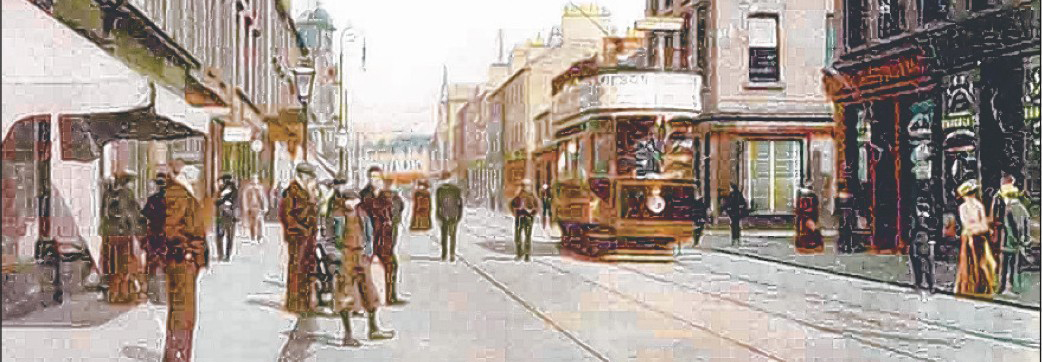The Kilmarnock Tramway System
By Craig Robertson
Former editor of the Kilmarnock Standard
From Trolley – Summer 2017

The history of trams in Scotland’s cities is widely written about.
But what’s not so well known is how trams shoogled and rattled around some of our towns.
One of those is Kilmarnock – although you could be forgiven for overlooking this local service in a town more famous for building steam locomotives.
And it only operated from 1904 to 1926.
The Kilmarnock tramway system was quite small compared to others of its time with around four miles of track and only 14 trams.
After repeated demands in the town for some sort of tram system to keep up with its thriving industries of whisky and carpet making the scheme was approved via an Act of Parliament in 1904.
Motherwell firm Hurst, Nelson and Co built 11 double-decker open-topped cars in July that year – trams which were fondly remembered for giving you a good soaking in the rain.
Another three were later ordered to bring the stock up to 14.
It proved popular – it opened in December 1904 and by the following May had carried nearly one million passengers.
Trams soon became part of the fabric of the town centre with the local population seeing it as a safe and reliable mode of transport.
But that view soon came to an end on Saturday, July 27, 1907 when it was hit by a double tragedy.
Local historian and author Frank Beattie recalled the story recently in the Kilmarnock Standard: “It was the start of the Grozet Fair and Kilmarnock was in holiday mood. About 8pm five-year-old William Rowland, son of a lace weaver from Fore Street, had been to the shows.
“He was hanging on to the back of a lorry in High Glencairn Street near the junction with James Little Street. He jumped off, straight into the path of a tram. He died instantly.
“It was the first fatal accident involving the Kilmarnock trams. Incredibly, less than three hours later there was a second accident. It happened on the road to Hurlford. John Campbell, a miner from Galston, stumbled, was hit by a tram and knocked down. He died the following afternoon.”
But the tramway continued to operate through the First World War and soon hit record passenger numbers at 3.1 million in 1919.
But it had become out of date and was rapidly losing money.
Subsidence from old mines caused ongoing track repairs while the legacy of war on the town caused ongoing problems.
Owners, the Kilmarnock Corporation, began to focus on early buses as a better way of getting people around – and the death of the trams was laid out before it.
Eventually it was closed and abandoned leaving Kilmarnock with the legacy of being one of the earliest Scottish towns to stop its tram system.
It may have been short-lived but the trams in Kilmarnock will always been remembered fondly in a town with a proud industrial heritage.